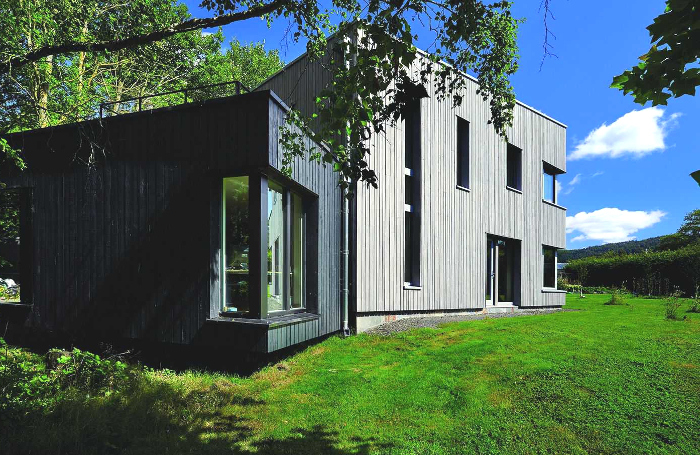Will South is a Director and Engineer at Etude, focused on sustainability in construction. He is also a Passivhaus Certifier and Designer and a member of the RIBA's Sustainable Futures Expert Advisory Group.
In this blog, he outlines simple features that he believes all new houses should implement if architecture is to make a difference in tackling climate change.
As the RIBA has now declared, we are in a state of climate emergency. This requires action. But what kind of action? What can architects do to help?
The advice on what is needed, by whom, and when is bewildering. The complexity is often paralysing. However, there are simple things that architects can implement on projects – starting today – that can make an impact.
There are technologies available now that have a track record of working at the scale we need. Most of what we require already exists, is not complicated, and has been robustly explored.
Essentially, new houses need to use less energy.

This is made very clear in the report UK housing: Fit for the future? by the Committee on Climate Change (CCC). It states that new buildings need to be ultra low energy, using close to Passive House levels of heating energy, as of now.
Helpfully, it states the factors new homes should include in order to achieve this. Here’s the shortlist:
- excellent airtightness
- ventilation with heat recovery
- high levels of insulation
- triple glazing
- timber frame
These are simple features that could be included in all our projects more or less immediately. They should, I would argue, be the new norm. Together they provide a robust starting point for better buildings that can be further improved by thoughtful design.
None of these can work on their own, but as a package they kick-start the kind of building design we need. They address energy efficiency, but also reduce overheating and moisture risk, while improving indoor air quality.

There is a cost. The CCC commissioned both Currie & Brown and AECOM to research this for ultra low-energy homes and they came up with an increase in build cost ranging between 1.1% and 4.3%. However, there are major benefits to the client. The reduction in the price of bills is one, but low energy improvement is also an investment in the fabric of the building that can improve the internal environment, comfort, and longevity of your client’s home.
At a national level the alternative is the complex, costly, and higher risk implementation of later renovation. So many would argue that the sooner this level of performance is either mandated or incentivised, the better. In fact many larger housing clients reducing the carbon emissions across a whole stock have already come to this conclusion, and are insisting on improved performance for new buildings.
For new-build homes we can make an impact with simple, robust and available technology. House design can and must respond to the climate emergency in a positive way.









